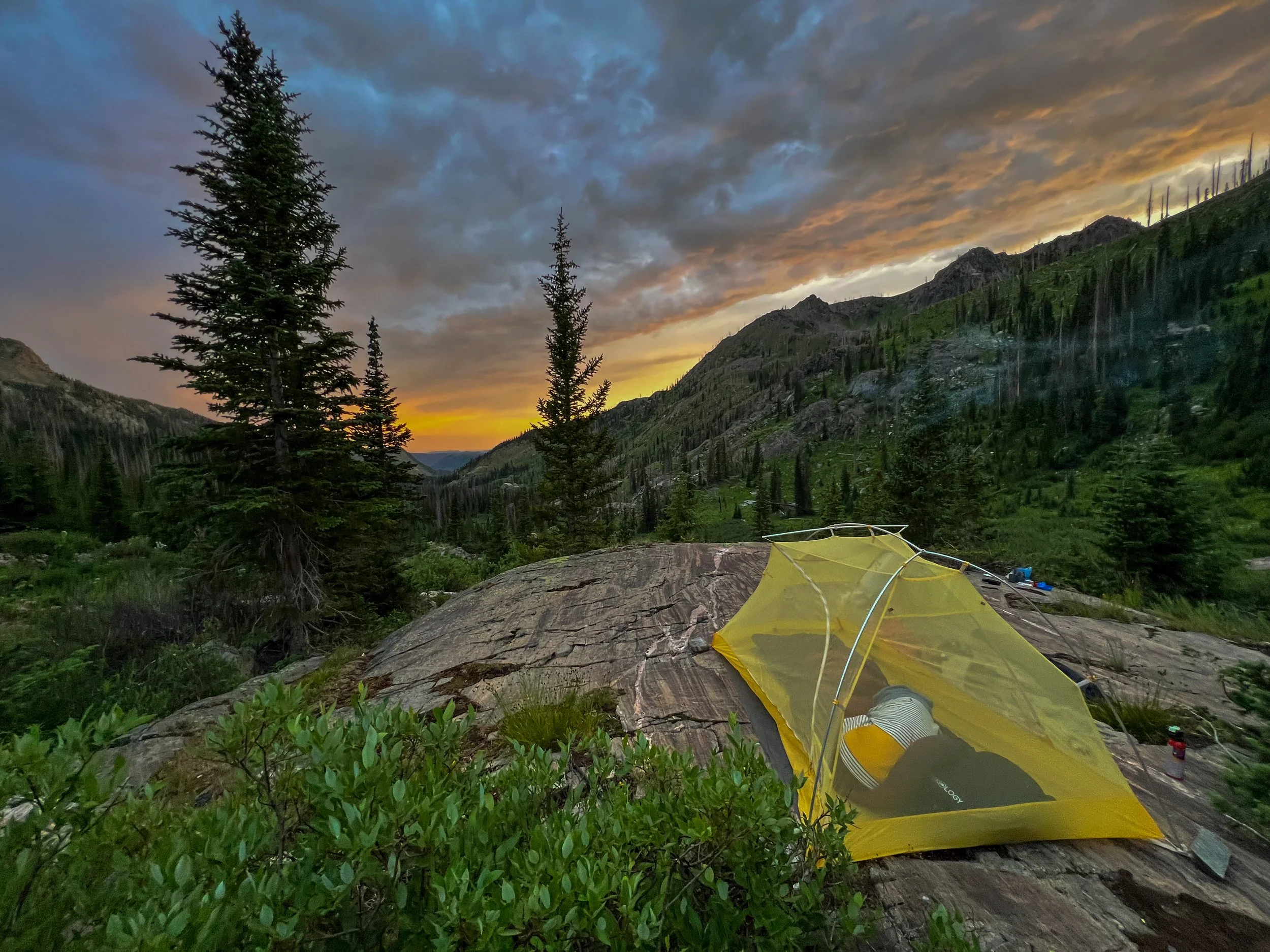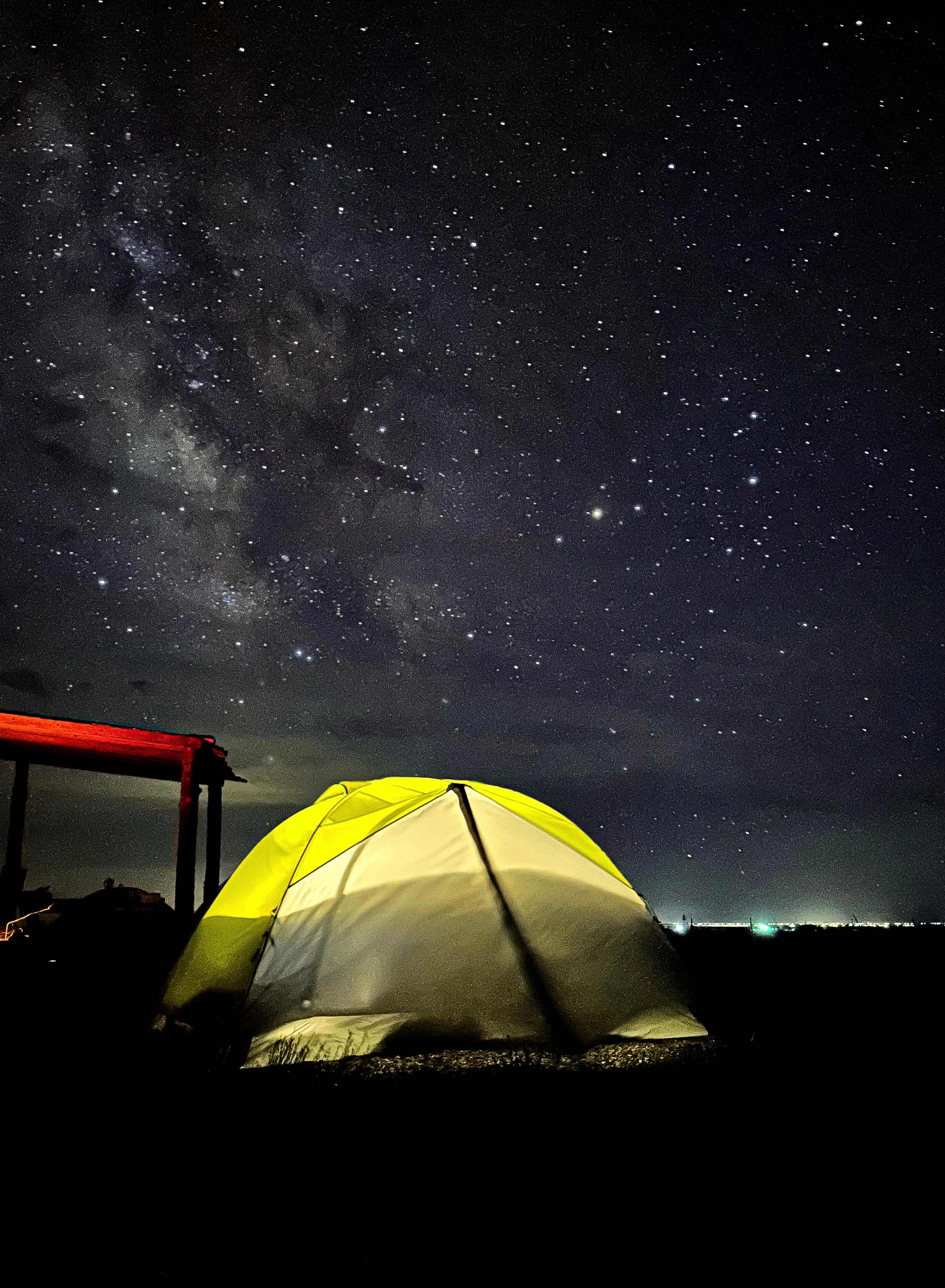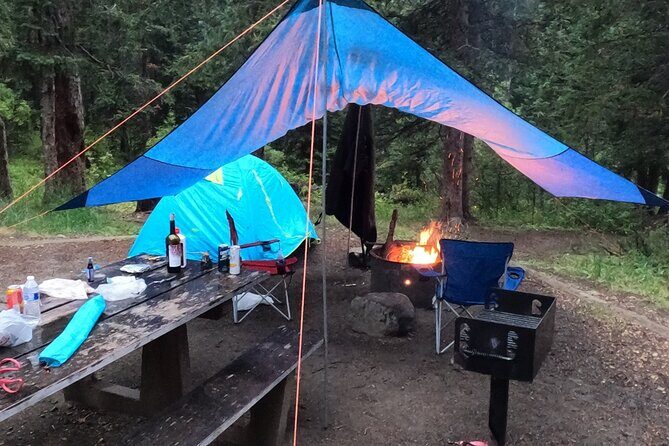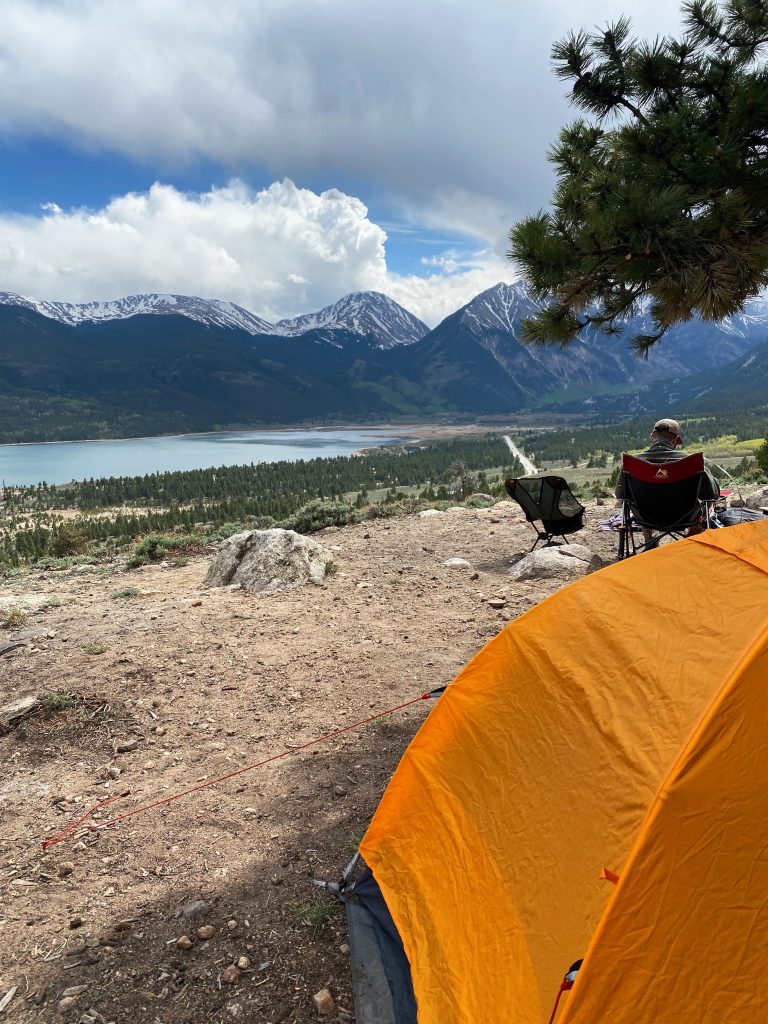Are you dreaming of waking up surrounded by towering pine trees and breathtaking mountain views? If you’re planning to explore the Alpine Trail in Colorado, you might be wondering if you can set up your tent and camp along the way.
Knowing where you can pitch your tent is key to making your trip smooth and unforgettable. You’ll discover everything you need to know about tent camping on the Alpine Trail—so you can plan your adventure with confidence and enjoy every moment under the Colorado sky.
Keep reading to find out the best spots, rules, and tips for camping on this stunning trail.

Credit: expeditioncourage.com
Alpine Trail Overview
The Alpine Trail in Colorado offers a beautiful hiking experience. It lets campers enjoy nature and fresh mountain air.
This trail is popular for its stunning views and peaceful camping spots. Many wonder if tent camping is allowed along the trail.
Trail Location And Length
The Alpine Trail is located in the Rocky Mountains of Colorado. It stretches across high mountain terrain and alpine meadows.
The trail is about 8 miles long. It starts near the trailhead parking area and loops back to the same point.
Scenic Highlights
The trail offers views of snow-capped peaks and wildflower-filled valleys. You can see mountain lakes and wildlife along the way.
- Panoramic views of the Rocky Mountains
- Colorful alpine wildflowers in summer
- Clear mountain lakes for resting
- Chance to see deer, birds, and marmots
Best Time To Visit
The best time to visit the Alpine Trail is from July to September. The weather is mild and the trail is mostly snow-free.
Spring and fall can be cold and wet. Winter brings heavy snow, making the trail hard to use.
Camping Rules On Alpine Trail
Camping on the Alpine Trail in Colorado is a special experience. It requires following certain rules to protect nature and keep everyone safe.
These rules help preserve the trail and make sure future campers enjoy the area too. Knowing the rules before camping is very important.
Permitted Camping Zones
Camping is only allowed in designated areas along the Alpine Trail. These zones are chosen to reduce impact on plants and wildlife.
Campers must stay within these zones and avoid camping near water sources or fragile environments.
- Use established campsites marked on trail maps
- Camp at least 200 feet away from lakes and streams
- Follow all signs and local camping restrictions
Campfire Regulations
Campfires are controlled to prevent wildfires and protect nature. Check current fire rules before lighting a fire.
Use a camp stove for cooking whenever possible. If fires are allowed, only build them in fire rings or pits provided.
- Keep fires small and manageable
- Never leave a fire unattended
- Fully extinguish fires before leaving
- Collect only dead wood from the ground
Leave No Trace Principles
Leave No Trace means leaving the trail and campsite as you found them. This keeps nature clean and safe for animals.
Pack out all trash, leftover food, and litter. Avoid damaging plants or disturbing wildlife.
- Carry out all garbage and waste
- Use toilet facilities or bury human waste properly
- Stay on marked trails to avoid erosion
- Respect wildlife and keep a safe distance
Tent Camping Spots
The Alpine Trail in Colorado offers many places to camp with a tent. Camping here lets you enjoy nature up close. You can find spots for both easy access and backcountry adventures.
Knowing where to camp helps you plan your trip better. Some areas are popular and have facilities. Others are more remote and wild.
Popular Tent Sites
Many campers choose popular sites along the Alpine Trail. These spots often have picnic tables, fire rings, and toilets. They are easier to reach by car or trail.
These sites fill up fast in summer. Arriving early or booking ahead can secure your spot. Popular sites include:
- Timber Creek Campground
- Blue Lake Campground
- Lost Lake Campground
Backcountry Camping Options
Backcountry camping lets you camp away from crowds. You carry your gear and hike to remote spots. These sites have no facilities and require more preparation.
You must follow Leave No Trace rules. Choose durable surfaces and keep campsites small. Some backcountry areas require permits to camp.
- Camp near alpine lakes
- Use established fire rings if allowed
- Pack out all trash and waste
Campsite Reservations
Many popular campgrounds on the Alpine Trail require reservations. Booking in advance helps avoid full sites. You can reserve online or by phone.
Backcountry permits may also be needed. Check with the local ranger station before your trip. Some areas have limits to protect nature.
- Reserve Timber Creek and Blue Lake campgrounds early
- Apply for backcountry permits months ahead
- Follow all rules for campsite use
Gear And Preparation
Tent camping on the Alpine Trail in Colorado needs good gear and careful planning. The trail is high in the mountains, so you must be ready for changing weather and rough terrain.
Proper preparation helps keep you safe and comfortable. This guide covers what to bring and how to prepare for your camping trip.
Essential Camping Equipment
You need the right equipment to camp safely on the Alpine Trail. Bring a lightweight tent that can handle wind and rain. A sleeping bag rated for cold temperatures is important.
Also, pack a sleeping pad to protect you from the cold ground. A portable stove and fuel help you cook food. Don’t forget water bottles and a water filter or purifier.
- Four-season tent
- Cold-weather sleeping bag
- Insulated sleeping pad
- Portable stove and fuel
- Water bottles and filter
- Headlamp or flashlight with extra batteries
- Map and compass or GPS device
- First aid kit
- Extra clothing layers
Weather Considerations
Weather on the Alpine Trail can change fast. Temperatures drop at night, and storms can come without warning. Check the weather forecast before you go.
Bring warm clothing, rain gear, and sun protection. Dressing in layers helps you adjust to temperature changes. Avoid camping near streams that can flood during rain.
- Check weather updates daily
- Wear moisture-wicking base layers
- Carry waterproof jacket and pants
- Bring hat, gloves, and sunglasses
- Use sunscreen with high SPF
- Choose camping spots above flood zones
Safety Tips
Safety is very important on the Alpine Trail. Keep your food stored away from animals. Use bear-proof containers if possible. Tell someone your trip plan before you leave.
Stay on marked trails to avoid getting lost. Carry a whistle and a fully charged phone for emergencies. Know basic first aid and how to treat common hiking injuries.
- Store food in bear-proof containers
- Inform someone of your route and return time
- Stay on established trails
- Carry a whistle for emergencies
- Bring a fully charged phone or satellite device
- Learn basic first aid skills
- Know how to signal for help
Wildlife And Environmental Concerns
Tent camping on the Alpine Trail in Colorado offers a chance to enjoy nature closely. It is important to respect wildlife and protect the environment.
Understanding the risks and following rules helps keep the area safe for animals and campers.
Animal Encounters
The Alpine Trail is home to many animals like deer, elk, and small mammals. You might see birds and insects too.
Stay calm if you meet an animal. Do not feed or touch wildlife. Keep a safe distance and avoid loud noises.
Protecting The Ecosystem
Camping can harm plants and soil if you are not careful. Use established campsites and trails to reduce damage.
Carry out all trash and avoid picking flowers or breaking branches. This helps keep the trail beautiful for others.
- Camp only in designated areas
- Do not disturb plants or animals
- Pack out all your waste
- Use a stove instead of a campfire when possible
Bear Safety Measures
Bears live in the Alpine Trail area. It is important to store food properly to avoid attracting them.
Use bear-proof containers or hang food in a tree away from your tent. Keep your campsite clean and free of food scraps.
- Store food and trash securely
- Do not leave food unattended
- Make noise while hiking to avoid surprising bears
- Carry bear spray and know how to use it
Alternative Accommodations
Tent camping on the Alpine Trail in Colorado is limited in some areas. Many hikers look for other places to stay nearby. Alternative accommodations offer comfort and convenience.
These options include cabins, RV spots, and group camping sites. They fit different needs and group sizes. Let’s explore these alternatives for your trip.
Nearby Cabins And Lodges
Cabins and lodges near the Alpine Trail provide a warm shelter after a day outside. They are good for people who want a bed and roof. Many have basic amenities like heating and kitchens.
These places are often close to trailheads. They let you rest well before or after hiking. Some cabins allow pets and have easy parking.
- Cozy rooms with beds and blankets
- Heating and cooking facilities
- Located near trail entrances
- Pet-friendly options available
Rv And Car Camping
RV and car camping spots are available near the Alpine Trail. These spots let you camp with your vehicle. They often have access to water and restrooms.
RV camping is great for those who want more comfort. It lets you bring more gear and stay dry in bad weather. Car camping spots may be simpler but still offer space and safety.
- Designated parking spots for RVs and cars
- Access to water and restrooms
- Safe and easy to reach from roads
- Option for electric hookups in some areas
Group Camping Sites
Group camping sites near the Alpine Trail fit larger parties. These sites have more space for tents and activities. They often include picnic tables and fire rings.
These areas are perfect for family trips or scout groups. They offer a chance to camp together safely. Reservations may be required to use these spots.
- Large spaces for multiple tents
- Picnic tables and fire rings
- Suitable for families and groups
- May require advanced booking
Permits And Fees
Tent camping on the Alpine Trail in Colorado requires specific permits and fees. These rules help protect the environment and keep the trail safe for everyone.
It is important to know about the permits and fees before planning your camping trip. This guide explains what you need to camp on the Alpine Trail.
Camping Permits
Camping on the Alpine Trail needs a backcountry camping permit. This permit controls the number of campers and protects the area.
Permits are required for all overnight stays along the trail. You must carry the permit with you during your trip.
Trail Access Fees
Some parts of the Alpine Trail have fees to access the trailhead or the camping areas. These fees help maintain the trail and facilities.
Fees vary by location and season. Check local park websites for current fee information before your trip.
How To Apply
You can apply for camping permits online or in person at ranger stations. Applying early increases your chance of getting a permit.
Provide your trip dates, group size, and contact information when applying. Keep a copy of your permit with you on the trail.
- Visit the official park website
- Fill out the camping permit application
- Pay any required fees
- Print or save your permit for the trip

Credit: www.hipcamp.com
Tips For A Successful Trip
Tent camping on the Alpine Trail in Colorado is a great way to enjoy nature. The trail offers beautiful views and fresh air.
To have a good trip, you need to prepare well. Here are some tips to help you camp safely and comfortably.
Packing Smart
Bring light and warm clothes for the changeable mountain weather. Pack only what you really need to keep your backpack light.
Make sure your tent is easy to carry and set up. Don’t forget to bring a sleeping bag that works in cold temperatures.
- Waterproof jacket and pants
- Layered clothing for warmth
- Sturdy hiking boots
- Lightweight tent and sleeping bag
- Map and compass or GPS
- Food and water supplies
- First aid kit
Navigating The Trail
The Alpine Trail has many markers, but weather can make them hard to see. Always carry a map and a compass or GPS device.
Follow marked paths to avoid getting lost. Stay on the trail to protect the environment and for your safety.
- Check the weather before you start
- Use a GPS or map to track progress
- Stick to marked trails
- Tell someone your route and expected return time
- Watch for trail signs and markers
Dealing With Altitude
The Alpine Trail reaches high elevations. The air is thinner, which can make breathing harder and cause tiredness.
Take time to rest and drink plenty of water. Move slowly and listen to your body to avoid altitude sickness.
- Acclimate by resting at lower altitudes first
- Drink lots of water
- Avoid alcohol and heavy exercise early on
- Eat light, high-energy foods
- Know symptoms of altitude sickness: headache, nausea, dizziness

Credit: www.travelersuniverse.com
Frequently Asked Questions
Can You Camp On The Alpine Trail In Colorado?
Yes, you can tent camp on the Alpine Trail in Colorado. It’s a popular activity for outdoor enthusiasts. Ensure you follow Leave No Trace principles to protect the environment. Check local regulations and weather conditions before you go to ensure a safe and enjoyable experience.
What Are The Best Months For Camping There?
The best months for camping on the Alpine Trail are June to September. During these months, the weather is generally mild and more predictable. However, always be prepared for sudden weather changes in the mountains. Early or late-season camping might encounter snow, so plan accordingly.
Do You Need A Permit To Camp On The Trail?
Yes, a permit is often required for camping on the Alpine Trail. Permits help manage the impact on the environment and ensure a safe experience for everyone. Check with local authorities or the managing agency for specific permit requirements and availability before your trip.
Are There Designated Campsites On The Alpine Trail?
There are designated campsites along parts of the Alpine Trail. These sites help minimize environmental impact and are often equipped with basic amenities. It’s recommended to use these sites when available. Always follow posted rules and guidelines to protect the natural surroundings.
Conclusion
Tent camping on the Alpine Trail in Colorado is possible with the right planning. Be sure to follow all rules and respect nature. Choose safe spots to set up your tent. Carry necessary gear for changing weather. Enjoy the peaceful mountain views and fresh air.
Camping here offers a great way to connect with nature. Prepare well and stay safe for a memorable outdoor experience.

